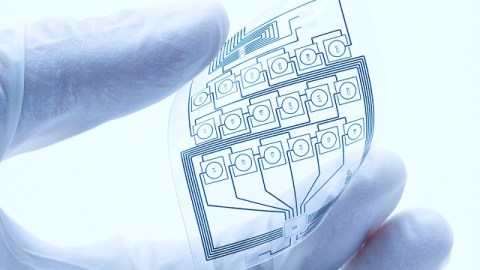Flexible Electronics Could Soon Have A Flexible Energy Source

What’s the Latest Development?
In a paper published in this month’s Nature Communications, a team of researchers from universities in the US, China, and South Korea report on their work with a battery made with tiny, closely-spaced solar cells embedded into a stretchable polymer. The cells are connected to each other via “‘serpentine’ connections – wires that loop back on themselves in a repeating S shape, with that string of loops itself looped into an S shape.” When the polymer is stretched, the wires stretch but do not become taut or “pop up.” Additionally, according to the team, the battery can be charged wirelessly over a short distance.
What’s the Big Idea?
With all the buzz surrounding flexible, stretchable electronics, one big barrier to their entering the market has been the lack of equally flexible power sources. Another challenge involved reducing their size without reducing the performance. University of Illinois professor and lead author John Rogers says flexible battery-operated electronics could be used in a variety of applications, most notably “those that involve devices integrated with the outside of the body, on the skin, for health, wellness and performance monitoring.”
Photo Credit: Shutterstock.com





